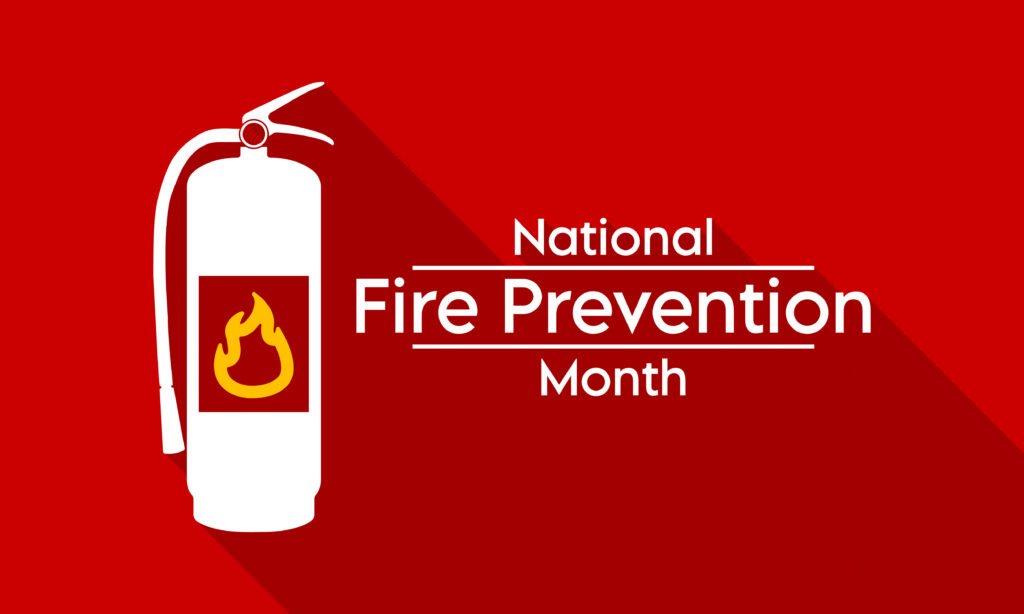Preventing Fires in Healthcare Facilities: What You Need to Know

October is Fire Safety Month, but fire prevention should be a year-round focus — especially in healthcare facilities. According to the National Fire Protection Association, the fire department responds to around 5,750 structure fires in health care facilities every year. On average, these fires cause two deaths, 157 injuries and $50.4 million in direct property damage.
Of course, this figure doesn’t take into account lawsuits, or the severe damage to a facility’s reputation. All too often, fires in healthcare facilities are preventable, and with the appropriate precautions these incidents can be avoided. And if a fire does occur? It’s equally important to have appropriate safety protocols in place.
What Causes Fires in Healthcare Facilities?
From operating rooms to nursing homes, fires occur in all types of healthcare properties. Nearly half of all healthcare facility fires take place in nursing homes; cooking equipment is most commonly the culprit, followed by electrical elements. Among healthcare facilities, hospitals are frequently the site of burns and fires — and operating rooms are especially at risk.
According to the Emergency Care Research Institute (ECRI) Health Devices Guide, OR fires rank third among the top 10 technology hazards. In the U.S., between 550 to 650 fires occur in operating rooms every year. These fires can be especially hazardous because they often occur in direct contact with the patient’s skin or airway.
Most OR fires occur in the head, face, neck and chest areas. This is due to the presence of oxygen. Sparks and heat are more likely to ignite in an oxygen-rich environment. Beyond oxygen, there are two additional components that make up the fire triangle: fuel and an ignition source.
In the OR, fuel sources may include surgical drapes, alcohol-based prep agents, PPE, skin or hair. Common ignition sources include electrosurgical units (ESUs), electrocautery devices, lasers and fiber-optic illumination systems.
How to Prevent Fires in Healthcare Facilities
There are several steps that healthcare facilities should take to prevent fires. To begin with, all staff should participate in regular drills and receive training on fire extinguishing equipment along with rescue and escape routes. In the OR, fire prevention protocols and potential hazard identification should be included in the medical team’s pre-surgery planning.
The National Fire Protection Association’s NFPA 99 Health Care Facilities Code provides guidance to minimize the hazards of fire, explosion and electricity based on the level of healthcare services and risk to patients, staff or visitors.
OSHA’s Healthcare Fire Safety eTool is another helpful resource for fire prevention planning. OSHA’s fire safety requirements include adequate exit routes, emergency action plans, a fire prevention plan, appropriate hazardous materials handling, electrical wiring methods and more.
The FDA has several recommendations for reducing the risk of fire in a surgical setting, including the following guidelines:
- Carefully evaluate if the patient needs extra oxygen.
- Prevent alcohol-based antiseptics from pooling during skin preparation.
- Ensure that alcohol-based antiseptics applied to the skin are completely dry before draping the patient; wait three full minutes for the solution to dry completely.
- When not in use, place potential ignition sources such as electrosurgical instruments and fiber-optic light cables in a holster or safety cover and not on the patient or drapes.
- Ensure good communication among all members of the surgical team.
- Practice fire drills so that everyone is aware of roles and responsibilities in the event of a surgical fire.
What To Do if There’s a Fire in the Healthcare Facility
First and foremost, all staff need to know exactly what to do if there’s a fire in your medical facility. That includes knowing their individual role in emergency procedures, and being familiar with the overall fire safety plan. Everyone who works in the facility should know where to find fire alarms (and how to use them), along with the location of exit doors and fire extinguishers.
Two acronyms can help teams know what to during a fire incident. The first is RACE:
R — Rescue anyone in immediate danger
A — Activate the alarm (“CODE RED” in healthcare facilities)
C — Contain the fire
E — Extinguish the fire or Evacuate
Staff must also know when to evacuate, and when to stay and fight a fire. They should only attempt to put the fire out if it is small and confined, they have access to a fire extinguisher (and know how to use it), and will not be putting themselves in any danger. If the fire spreads or becomes threatening in any way, staff should leave immediately.
If the team stays to fight the fire, the PASS acronym can help them remember how to operate the fire extinguisher.
P — Pull the pin at the top of the extinguisher
A — Aim the nozzle at the base of the flames
S — Squeeze the handle
S — Sweep from side to side at the base of the fire
In medical facilities, it’s important to safely remove the patient from the hazard area before using a fire extinguisher.
A Hidden Fire Threat in ORs
While lasers and electrosurgical equipment may present obvious hazards, fiber-optic light cables are an often overlooked source of burns and fires. These illumination devices can exceed a temperature of 500 degrees F and can ignite a drape or cause a burn in as little as six seconds. Fortunately, there is a simple way to prevent fires caused by fiber-optic light cables.
The FDA recommends using a safety cover such as GloShield to eliminate the risk of burns or fire caused by a fiber-optic light cable. Learn more about preventing fires in the OR and take a proactive approach to fire prevention in order to avoid an incident in your facility.
